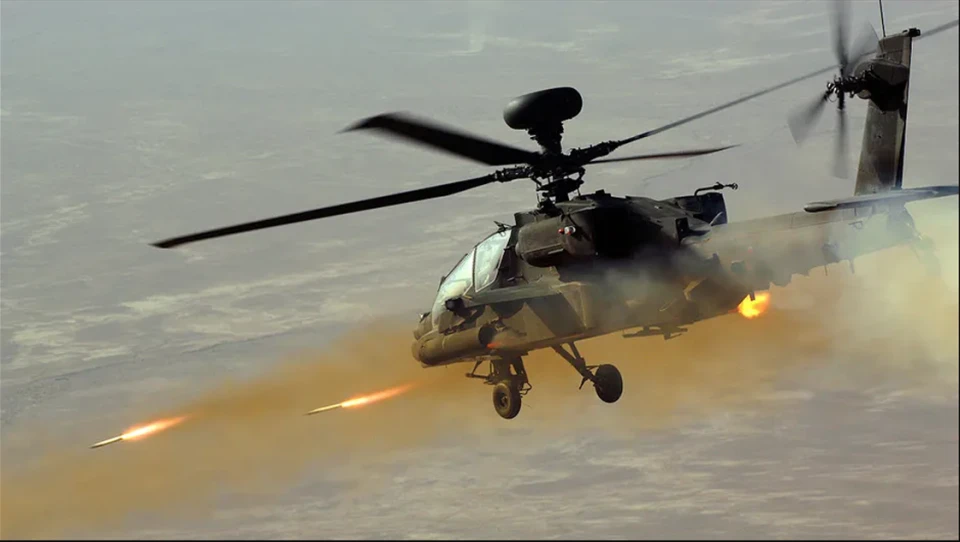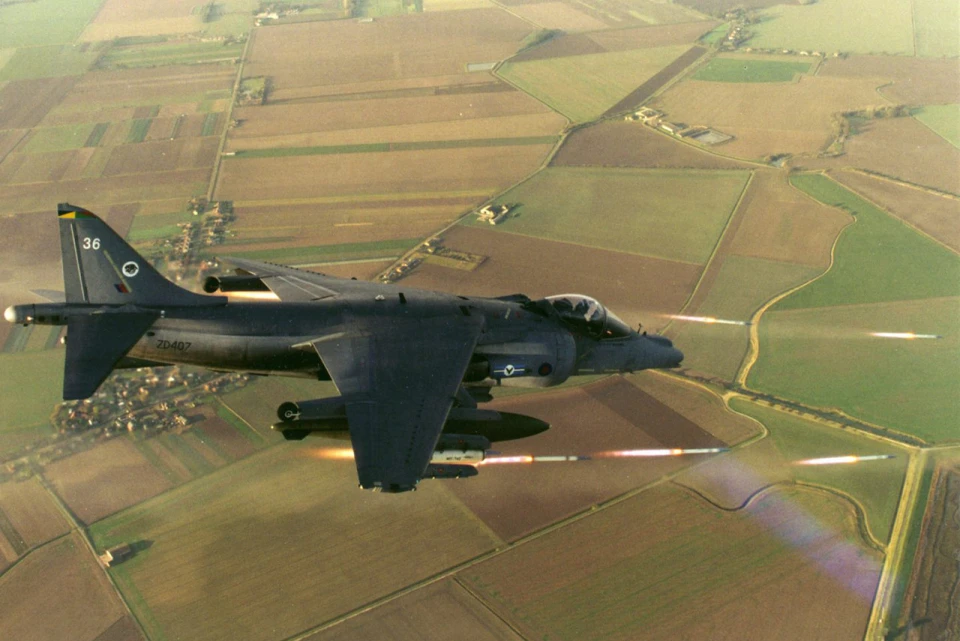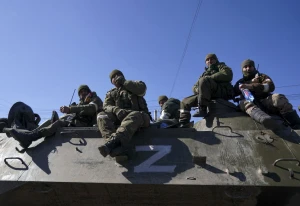
Canada's CRV7 Missiles: penetrating armor and concrete, potential supply boost for Ukraine
The Canadian Ministry of Defense is working on supplying Ukraine with CRV7 air defense missiles. "We are doing the work right now to make sure that those munitions can be safely transported and once that has been determined, and that should be only a matter of days, we will move as quickly as possible to get all of that resource to Ukraine as quickly as possible," said Canadian Defense Minister Bill Blair
The text covers the following topics:
- What is CRV7
- What are the features of the CRV7
- Characteristics of the CRV7
- How can CRV7s help at the frontline
- When and how many CRV7 missiles will Ukraine receive
What is CRV7
The CRV7 is a Canadian 70 mm caliber unguided air-to-air missile with a folding wing. It was developed by Bristol Aerospace of Winnipeg and is designed to be launched from aircraft and helicopters against ground targets. The name stands for Canadian Rocket Vehicle 7, or simply "Canadian Missile 7".
The CRV7 was introduced in the early 1970s as an upgraded version of the standard 70mm American air-to-ground missile. At the time, it was the most powerful weapon, the first missile to have enough energy to penetrate standard aircraft hangars of the Warsaw Pact countries. To this day, the CRV7 remains one of the most powerful unguided assault missiles, gradually becoming the de facto standard for Western countries (except the United States) and their allies.
The missile originated as a byproduct of another Canadian project focused on developing high-speed solid-fueled missiles. The rocket initially intended for engine testing served as the foundation for the development of a 70-mm missile tailored for the Canadian variant of the F-104 Starfighter fighter bomber. Weighing in at 6.6 kg, the missile typically carried a 4.5 kg high explosive warhead, mirroring the warhead specifications of comparable American missiles.
What are the features of the CRV7
The Canadian CRV7 missile is an upgraded iteration of the American Hydra 70, an unguided 70mm aircraft missile manufactured by General Dynamics and adopted after World War II. In contrast to its American counterparts, the CRV7 boasts improved accuracy and an extended range. Nevertheless, its operational altitude remains relatively modest, as the "seven" is optimally utilized within a range of no more than 5-7 km.
Defense Express observers emphasize that CRV7s are not traditional missiles but rather unguided rockets. Nonetheless, experts acknowledge them as highly effective unguided rockets, attributing their success to a notably more potent engine compared to other models in this class.

Photo: from open sources
According to military expert Oleh Zhdanov, the CRV7 missile travels at twice the speed of sound, establishing it as one of the fastest air-to-ground missiles currently in use.
"These missiles operate at supersonic speeds, although due to their short-range nature, speed is often not emphasized in the general specifications. These details are typically found in the extended tactical and technical characteristics. The CRV7 serves as a direct-action missile, meaning that if a target is visible, it can be engaged. Conversely, if a target cannot be seen, engagement is not possible. However, we are forced to employ a "fire blind" approach because our helicopters are unable to approach the front line safely, as they are at risk of being shot down," Zhdanov said.
The hull, despite its light weight, has a fairly strong structure, as it is made of an innovative mixture of fiberglass and epoxy resin.
Features of the CRV7
- Caliber - 70 mm (2.75 inches)
- Class - "air to ground", "ground to ground"
- Missile weight without warhead - 6.6 kg
- Warhead weight - 4.5 kg (subject to change)
- Effective range - 4,000 meters
How CRV7s can help at the frontline
Originally, the primary warhead for the CRV7 was the American M151 high-explosive with an instantaneous fuze, weighing 4.5 kg. Additionally, the aerial missile has the capability to be fitted with either a smoke or illumination warhead.

Photo: from open sources
Canada has developed several other modifications of the CRV7. The armor-piercing, high-explosive, incendiary WDU-50001/B is designed to destroy protected objects (bunkers, aircraft shelters). It can penetrate up to 4 meters of ground or one meter of concrete.
The specialized Canadian WDU-5002/B FAT warhead is designed to hit tanks with tungsten-steel "darts". The anti-tank warhead of the CRV7 missile is capable of penetrating the armor of a T-72 tank from any angle of attack at a distance of 3 km. Furthermore, there is an option for a special warhead equipped with 80 tungsten flakes, designed to effectively neutralize personnel and lightly armored vehicles.
Defense Express observers assert that the CRV7 missile holds significant potential for effective use in Ukraine. This is attributed to its compatibility with the Hydra 70 platform, allowing for deployment from the same launch systems. Moreover, the blocks housing the original American missile have previously been integrated under the wings of Ukrainian helicopters, facilitating the seamless adoption of the CRV7.
In addition, the CRV7 can be used to make ground-launched mini-MRLSs, and warheads can be removed from unusable CRV7s for use by Ukrainian drones.
Canadian missiles are called an inexpensive and effective weapon that is perfect for storming enemy positions and destroying infantry. They can also be used to destroy the equipment of Russian troops, who like to move in large columns, and to hit concrete hideouts or hangars.
When and how many CRV7 missiles will Ukraine receive
Specific talks about the supply of CRV7s to Ukraine began in early February this year. Then the Canadian Conservative Party opposition came up with a corresponding initiative.
"Instead of making Canadians pay millions of dollars to decommission these weapons, common sense Conservatives are calling on the Trudeau government to give these weapons to Ukraine who can use them in the defence of their sovereignty," Conservative leader Pierre Poilievre said at the time at a parliamentary meeting.
Almost immediately, the initiative was supported by Kyrylo Budanov, the head of the Main Intelligence Directorate of the Ukrainian Defense Ministry. In an interview with Global News, he called on Canada to transfer decommissioned CRV7 missiles to Ukraine, calling it a win-win scenario for both sides.
The CRV7s would be used both in Ukrainian attack helicopters and ground launchers to target Russian tanks and artillery, Budanov said.
In February, Canadian officials responded to proposals from the opposition and Ukrainians by saying they were considering the request. But they warned that the missiles are several decades old and that this poses a danger during use and transportation. But Ukraine said it was ready to take the risks because it was used to working with old munitions. A month later, the rhetoric of official Ottawa changed. Canadian Defense Minister Bill Blair called the transfer of CRV7 unguided rockets to Ukraine "a matter of days."
In total, Canada possessed 83,000 unguided CRV7 air-to-air missiles. Starting from the 2000s, they were gradually decommissioned, and as of 2021, efforts began to utilize them. Some of the missiles have been destroyed, while others are no longer operational. However, according to Canadian CBC journalists, at least 8,000 CRV7s remain in working condition and are equipped with warheads. It is these missiles that Ukraine claims to possess.
- News












































